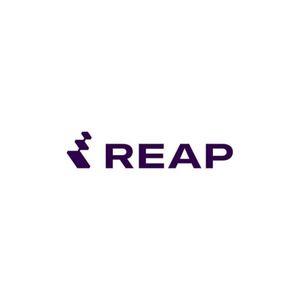MSTE:CA: Better Off Owning MSTR Directly, Hold
8 min read
Summary MSTE offers leveraged exposure to MicroStrategy and monthly income via covered calls, but adds complexity and extra fees versus owning MSTR directly. We remain bullish on Bitcoin and MSTR as a proxy, viewing both as hedges against fiat currency and global instability. The fund’s strategy only outperforms within a limited price range for MSTR; outside this, plain MSTR ownership has historically delivered better returns. Given the limited incremental benefit and added risks, we rate MSTE as a hold until clearer value over direct MSTR ownership emerges. Introduction The Harvest MicroStrategy Enhanced High Income Shares ETF (MSTE:CA) is a Canadian fund that aims to invest its assets into Class A shares of MicroStrategy ( MSTR ). This company formerly was a software and business intelligence focused firm, but nowadays is more well known for its Bitcoin dominated balance sheet, due to its large holdings in this cryptocurrency. This fund looks to both provide access to the upside of MSTR while also giving investors consistent income from distributions – paid out monthly. Total leverage of the fund goes up to 25% and its investable units are denominated in CAD. Below are some details of the fund from its prospectus . Distribution : $0.66 / month AUM : $179.3M Management Fee : 0.40% Being that the main holding of this ETF is MSTR, a company that we like due to it being a proxy for Bitcoin, we are inherently bullish on the underlying company. We will review some points above MSTR in the following section that dictate our thoughts about the company. MicroStrategy Company Review MSTR is known for buying and holding Bitcoin (BTC-USD) on its balance sheet. The company has announced a plan to continue buying this cryptocurrency, outlining a long-term plan to continually invest further in Bitcoin through its 42-42 plan by 2027. The firm reveals that the money to fund these purchases would occur through both equity and debt raises, as well as the current operating cash flows generated by the firm itself. This plan entails details such as goals of $42B in equity and $42B in fixed income capital raises by the end of 2027, which should continue to fund its investments in Bitcoin. Furthermore, the company is leveraging its continual offerings of preferred shares , which offer high rates, to attract investors to the company and therefore generate even more cash for them to exchange into Bitcoin. Essentially, MSTR is becoming more and more of a Bitcoin hedge fund in a sense, where investors can view their investments in MSTR as a bullish play on Bitcoin (and crypto markets in general). Currently, MSTR holds a total of 592,100 Bitcoins , with an average BTC cost of ~$70,666. In nominal values, they have spent roughly $42B on their Bitcoin purchases over the years. The following chart shows the buying cadence (every week) and amount bought for YTD 2025. MSTR Bitcoin Purchases ( MicroStrategy ) We view MSTR as a great hedge against fiat currencies and also as a stable hedge against chaos happening across the world today. For example, the firm recently bought more BTC during the ongoing conflict in the Middle East, betting that the conflict and funding for it might boost the price of BTC. Ultimately, an investment in MSTR means that you have faith and believe in the market changing dynamics of Bitcoin. It may be that you view it as a hedge, truly do not believe in the current traditional finance systems, or a bit of both. Either way, Bitcoin’s influence on global financial markets cannot be understated and should be respected as an asset with both utility (in terms of transactions) and a hedge (against fiat currencies and as a store of value). It should be mentioned, however, that MSTR as a holding company of BTC frequently trades at a premium in terms of performance compared to buying BTC outright. Look at the below chart, for example, comparing YTD returns on BTC and MSTR. MSTR vs BTC YTD Performance (Yahoo Finance) The top blue represents MSTR, and BTC is the red line. With nearly a ~19% delta in YTD performance, one has to consider whether MSTR is an overvalued way to gain exposure to the underlying BTC asset. Either way, it would appear that the market places a premium on the leader, Michael Saylor, and his vision of what MSTR can do with their vast BTC holdings. In summary, we are bullish on the future of BTC, and therefore, MSTR. With this ETF holding MSTR and providing stable, recurring income from it, we also are therefore bullish on the future of this fund. However, there are risks and considerations stemming from the leverage and covered call elements of the fund that we will cover in the next section. Covered Calls and Leverage MSTE utilizes both leveraged and covered calls in order to increase overall returns for investors. Their goal is to have the fund be up to 25% leveraged and write covered calls on up to 50% of the fund . Currently, the fund is 22.8% leveraged . For the purpose of this analysis, we assume the fund is split up like so: 25% is 2x leveraged. For now, we assume that there is no interest cost related to the leveraging 50% is not leveraged but has covered calls written against it 25% just owns MSTE directly Let’s explore a scenario: The fund owns 200 shares of MSTR that were bought at $100 per share. 50 additional shares were bought on leverage. The fund has sold covered calls on 100 shares at a strike price of $125 for total proceeds of $500 Scenario Description Gain/Loss on MSTR Gain/Loss on Option Total Gain/Loss Without Leverage/Options No movement MSTR does not move at all. $0 $500 $500 $0 Mildly Up MSTR ends up at a price of $110 $2,500 $500 $3,000 $2,000 Mildly Down MSTR ends up at a price of $90 -$2,500 $500 -$2,000 -$2,000 Very Up MSTR ends up at a price of $160 $11,500 ($2,500 on covered call shares, $9,000 on the rest) $500 $12,000 $12,000 Very Down MSTR ends up at a price of $50 -$12,500 $500 -$12,000 -$10,000 It’s hard to see exactly how the leverage and options impact returns, as they sometimes impact the returns in the same direction (positive or negative) and sometimes have an opposite (but not always equal) impact. A few rules of thumb: If the stock price remains at or below the strike price, then the covered call strategy will result in higher returns (compared to if you did not sell the calls). If the stock price goes above the strike price, then investors will see positive returns, but the returns would be higher if you had not sold the calls. Leverage amplifies both gains and losses. So if the stock price increases, you make more profit but if the stock price decreases you make less profit (both relative to a non-leveraged scenario). Let’s talk about the “Very Up” strategy. In the above scenario, the returns from having the covered calls and leverage are the same as if you had not done either. This is because the covered calls are decreasing potential returns by $3,000 while the leverage is increasing potential returns by $3,000. To be clear, these impacts will not always be equal. If instead the scenario was that the stock increased to $170, the total returns would be $13,000 while returns without leverage/options would be $14,000. MSTE gains with and without leverage/options (Doodad Capital) Above is a chart that visualizes the overall scenario. There are 3 main sections: $0 – $90: Investors are better off without the calls + leverage $90 – $160: Investors are better off using the calls + leverage $160+: Investors are better off without the calls + leverage So why are $90 and $160 the two points where the outcome flips? These are both points where the red and blue lines are exactly the same. This is because the negative impacts of leveraging are exactly canceled out by positive impacts of the calls (for the $90 case) or the positive impacts of leveraging are exactly canceled out by negative impacts of the calls (for the $160 case). These intersection points will change depending on various factors such as the call strike price, premium and interest costs of the leverage. For example, if instead the premium from selling the call was $1000, the intersection points would instead be at $80 and $170 instead. The key takeaway here is that investors in this kind of strategy would ideally see the stock price stay between the 2 intersection points. Otherwise, they would have larger returns without the additional call options and leverage. Finally, let’s talk about leverage interest. Since leveraging is a kind of debt, there will be an additional interest cost related to it. In this scenario, we borrowed enough cash to buy 50 shares of MSTR at $100 per share, resulting in a total debt of $5,000. The easy way to think about impacts of interest is that it changes the width of the range between the 2 intersection points. More interest would mean a narrower range, while less interest would result in a wider range. For example, with additional interest of $500, the range narrows from $90 – $160 to $100 – $150. Risks A key risk is BTC volatility. Being a cryptocurrency, it can sometimes be very volatile, as we all know. Therefore, the price of MSTR could also be impacted by swings in the price of BTC, as they are now so tied together. With a beta of 3.76 , this is a name that moves significantly compared to the market. This would be a risk that investors should keep in mind regarding the stability of their portfolio, and could therefore be a trade for more risk-tolerant investors. Another risk to consider is the additional cost of owning this ETF. Investors pay additional management fees as well as indirectly the leverage interest fees. All of this is fine if the returns outweigh the costs, but investors need to weigh the additional cost/complexity against the additional potential return they could gain. As we discussed, investors in this kind of strategy only make a profit if the share price ends up within a certain range, which limits the overall benefit of the fund. As you can see below, since inception, MSTE has actually lagged behind MSTR in returns by ~2% (the below chart is dividend adjusted, so proceeds from the covered call strategy are included). Investors could have saved on fees and the additional complexity by just buying MSTR instead. MSTR vs MSTE Returns (Stock Rover) Finally, we should also mention that while this fund is not very highly levered, it does have some leverage which could pose an additional risk. With leveraged investments, your losses could quickly compound, leading to potentially very large losses. Conclusion We are bullish on the future of BTC as we view it as a hedge against the traditional financial markets and as a safe haven in the event of conflicts around the world. Despite the risks and volatility associated with BTC, long-term, we believe that the currency will rise. For MSTE, it is interesting to see dual-features of it, offering both upside potential via leverage and recurring income via covered calls. However, we are not convinced if this additional complexity is providing enough value back to investors given the maintenance fee. The additional returns from the strategy are limited to only a specific window of price movement for MSTR and, as we showed, so far, investors would have been better off just owning MSTR. Until we see more evidence of incremental benefit from MSTE, we rate it as a hold.

Source: Seeking Alpha



